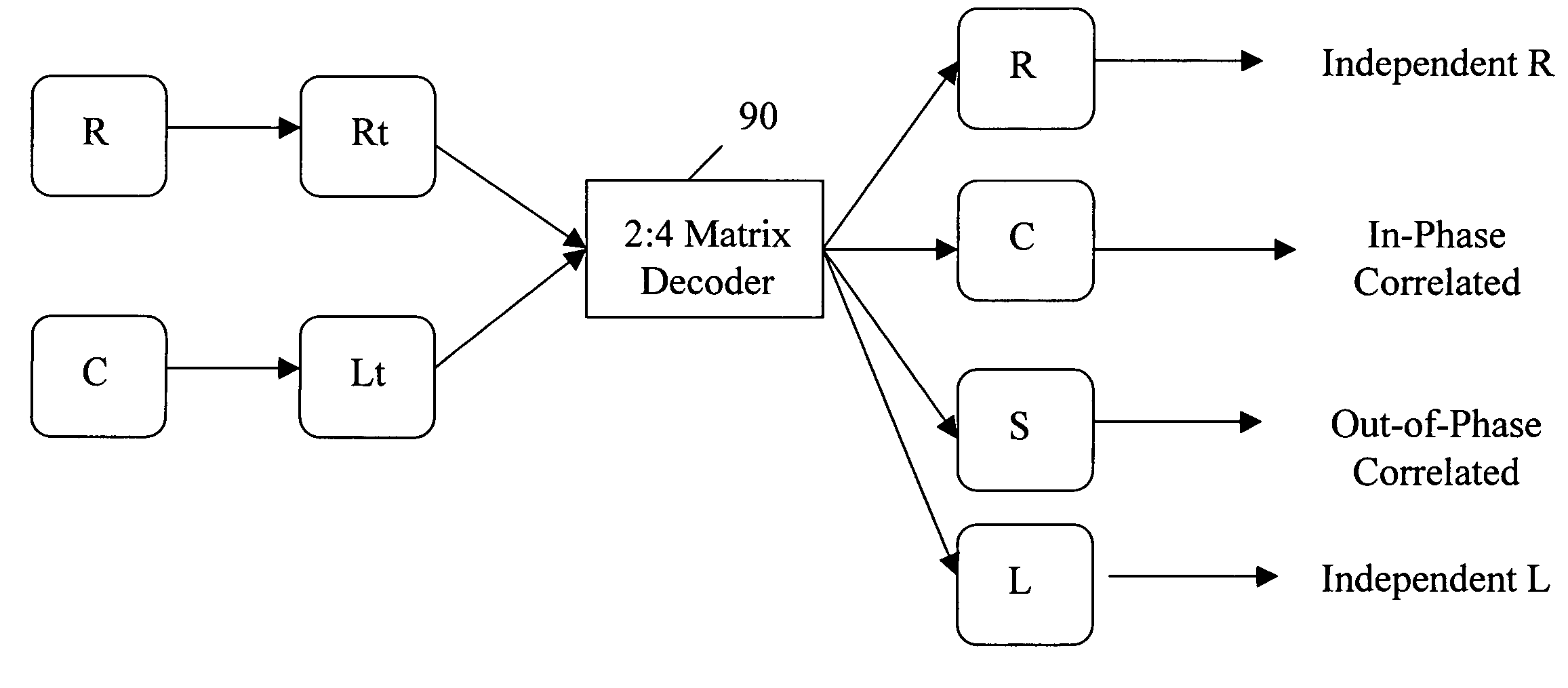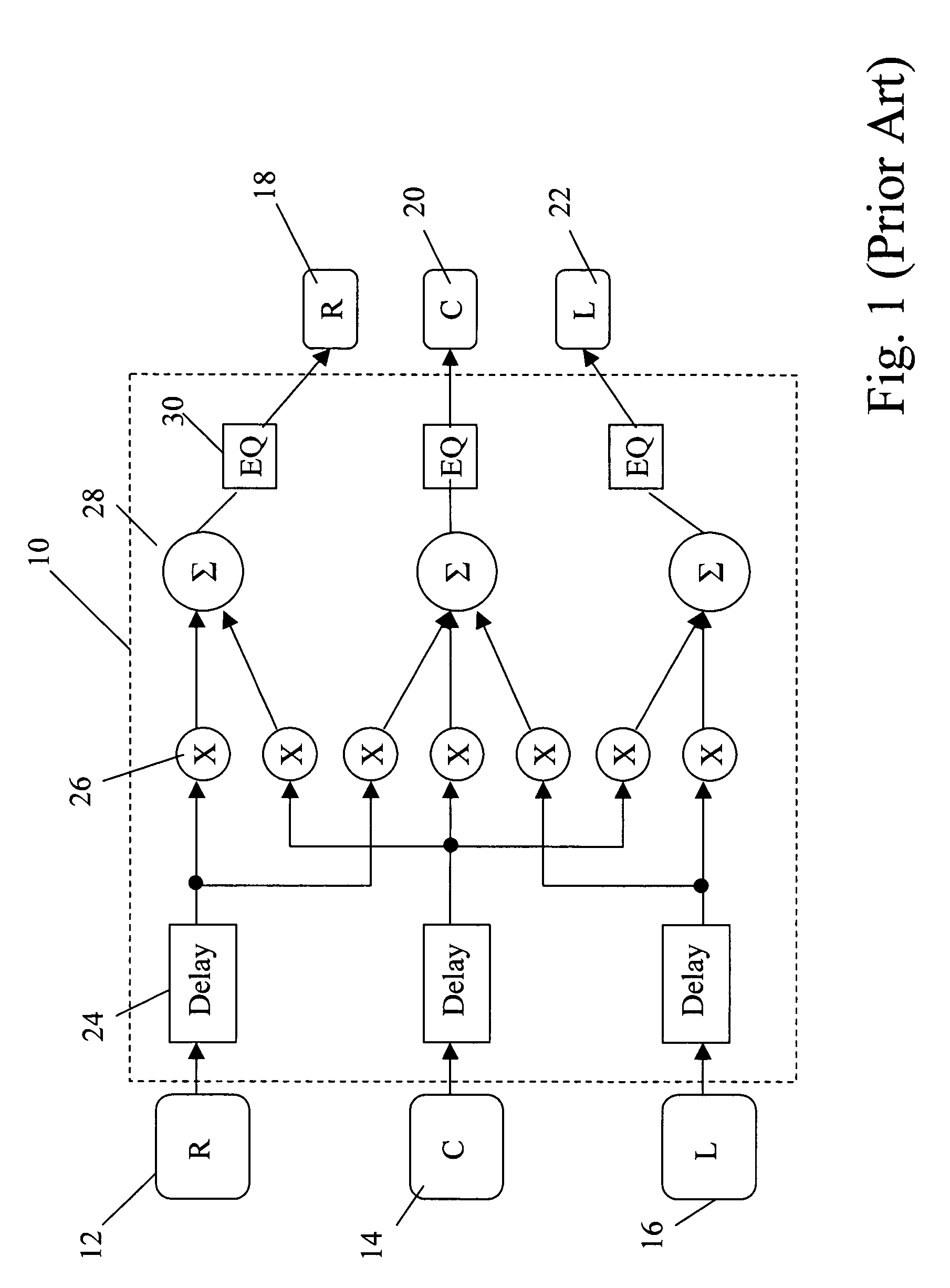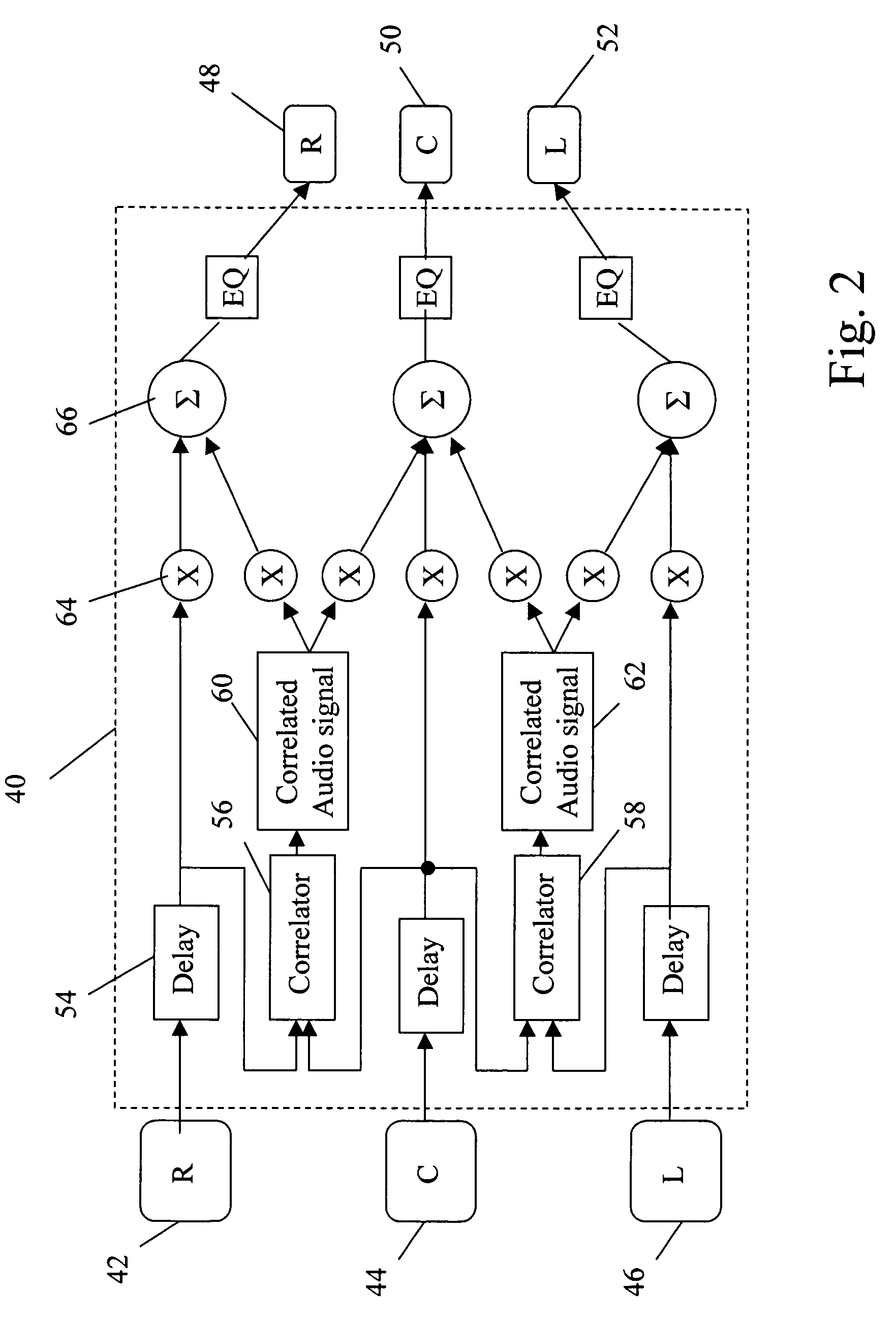Method of mixing audio channels using correlated outputs
a technology of outputs and audio channels, applied in the field of mixing of audio signals, can solve problems such as affecting the surround sound experience, affecting the multi-channel format, and losing some of the benefits of surround sound presentation
- Summary
- Abstract
- Description
- Claims
- Application Information
AI Technical Summary
Benefits of technology
Problems solved by technology
Method used
Image
Examples
Embodiment Construction
[0023]The application of multi-channel audio to automobiles revealed the desirability for remixing of the discrete audio channels to provide a more uniform surround sound experience for all passengers. However, although a straightforward mix was effective at rebalancing the multi-channel audio this approach could produce unwanted artifacts. If, for example, the R and C channels included the same or very similar content with appreciable phase or time delays, remixing these two channels could produce phase distortion and / or amplitude distortion. Furthermore, much of the desirability of multi-channel audio stems from the discrete unmixed presentation of the audio channels. The remixing process may soften the discrete presentation of the audio.
[0024]Therefore, the present invention provides a method of mixing audio channels that is effective at rebalancing the audio without introducing unwanted artifacts or overly softening the discrete presentation of the original audio. This is accomp...
PUM
 Login to View More
Login to View More Abstract
Description
Claims
Application Information
 Login to View More
Login to View More - R&D
- Intellectual Property
- Life Sciences
- Materials
- Tech Scout
- Unparalleled Data Quality
- Higher Quality Content
- 60% Fewer Hallucinations
Browse by: Latest US Patents, China's latest patents, Technical Efficacy Thesaurus, Application Domain, Technology Topic, Popular Technical Reports.
© 2025 PatSnap. All rights reserved.Legal|Privacy policy|Modern Slavery Act Transparency Statement|Sitemap|About US| Contact US: help@patsnap.com



